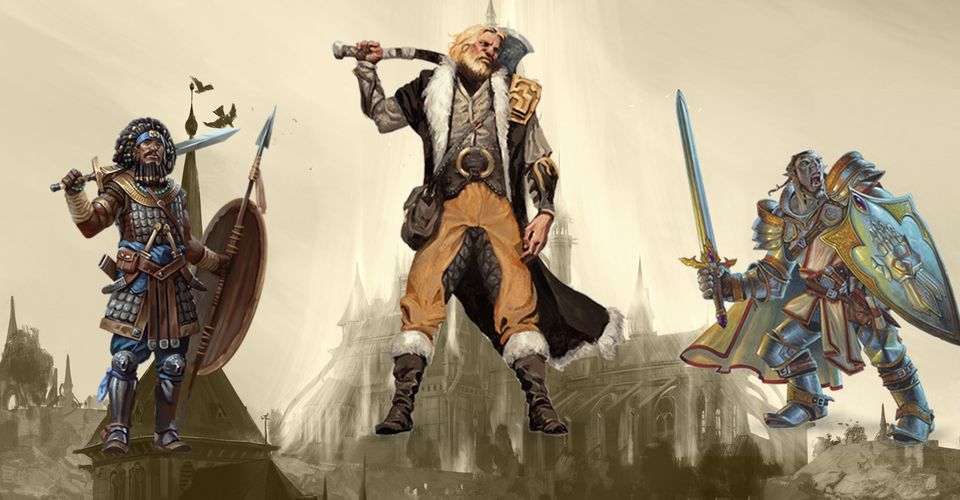Dungeons & Dragons: The Best Builds For Tanking

Every Dungeons & Dragons character has their own strengths and weaknesses, and those strengths tend to determine what role they should play in combat. Whereas some characters are at their best dealing damage from a distance or healing and supporting their party, others shine in the thick of the action. Having a tank that can soak up damage and demand the attention of enemies is important for any group, and there are a few specific builds that can best capitalize on this playstyle.
Barbarians, Fighters, and Paladins are all safe choices for a tank character in Dungeons & Dragons, thanks to their high hit die, solid choices for armor, and proficiency with shields. With that said, choosing the right D&D subclass is what turns a decent tank into a great one. For example, the Eldritch Knight subclass gives fighters access to both Evocation and Abjuration spells, the latter of which has plenty of great defensive options. By combining a Fighter’s initial strengths with the Defense Fighting style and select Abjuration spells (such as Shield), an Eldritch Knight is a formidable threat that enemies will have a tough time taking down.
Oath of the Ancients Paladins are another good choice for a D&D character that wants to protect their allies. Paladins are already a strong choice for a tank, seeing as they augment their martial prowess with abilities such as Lay on Hands, and Oath of the Ancients makes them even better. Starting at 7th Level, Oath of the Ancients Paladins gain access to resistance from spell damage for both themselves and their allies. Seeing as most frontline character struggle against spellcasters, the ability to mitigate damage spells and also protect allies is a great strength unique to these Paladins.
Path of the Ancestral Guardian in Dungeons & Dragons

Barbarian’s high health pools lend themselves well to tanking in Dungeons & Dragons, and the Path of the Ancestral Guardian subclass makes them arguably the best in the whole game. Ancestral Guardian Barbarians can impose disadvantage on attacks against other characters in the party, as well as reduce the damage that they take if they are attacked. These are some of the few true tanking features available in D&D, and when combined with the reduced damage they take while raging, it makes Barbarians an ideal tank in Dungeons & Dragons.
Classes and Subclasses aren’t the only things that make for a good tank in D&D. There are a number of feats useful for tanking in D&D, with the standout being Sentinel. Sentinel allows for even more situations where a character can make opportunity attacks against an enemy, and makes it so these attacks reduce the targets speed to 0. This means that, assuming the character hits, creatures will be unable to escape from them and attack an ally character. This feat is helpful for dealing damage and preventing enemies from delivering any, and should be a high priority for dedicated tanks.
As far as what D&D race a tank should select, there are a few decent options. Hill Dwarves gain an extra hit point at every level, and Half-Orcs can resist falling to 0 hit points once per long rest. Although these are decent options, either a Variant Human or a character that uses the custom origin introduced in Tasha’s Cauldron to Everything may be the best choice for a tank, since they gain access to an additional feat at first level.
Of all the combat roles in Dungeons & Dragons, tanking is clearly one of the most important. Without a character to soak up hits, damage dealers and support characters won’t not have the breathing room necessary to make use of their best abilities. Although there are plenty of character capable of tanking, those with the right choice of subclass, feats, and race will absolutely dominate on the frontlines of an encounter.
About The Author

















